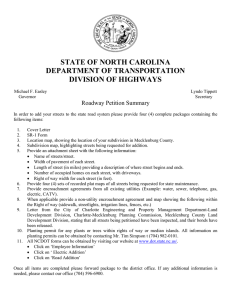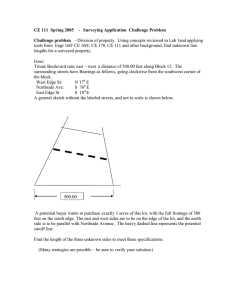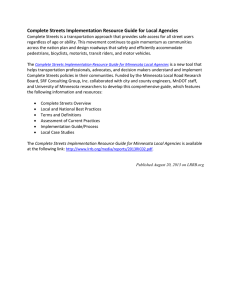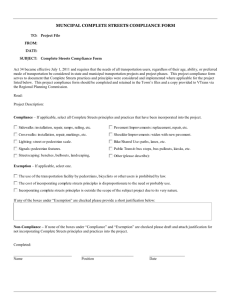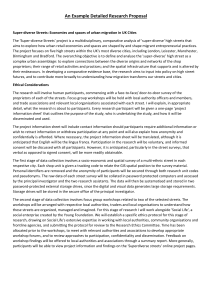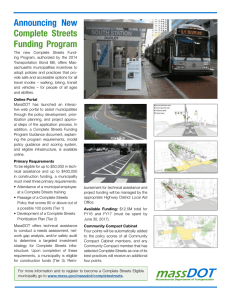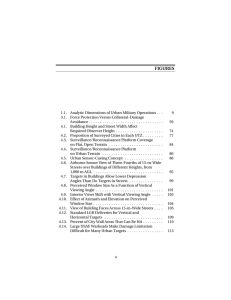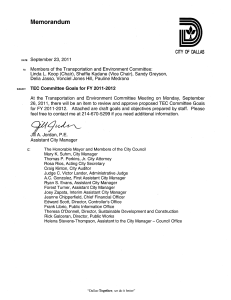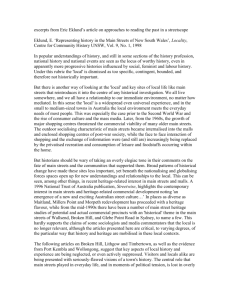The number of children playing in the streets and areas
advertisement
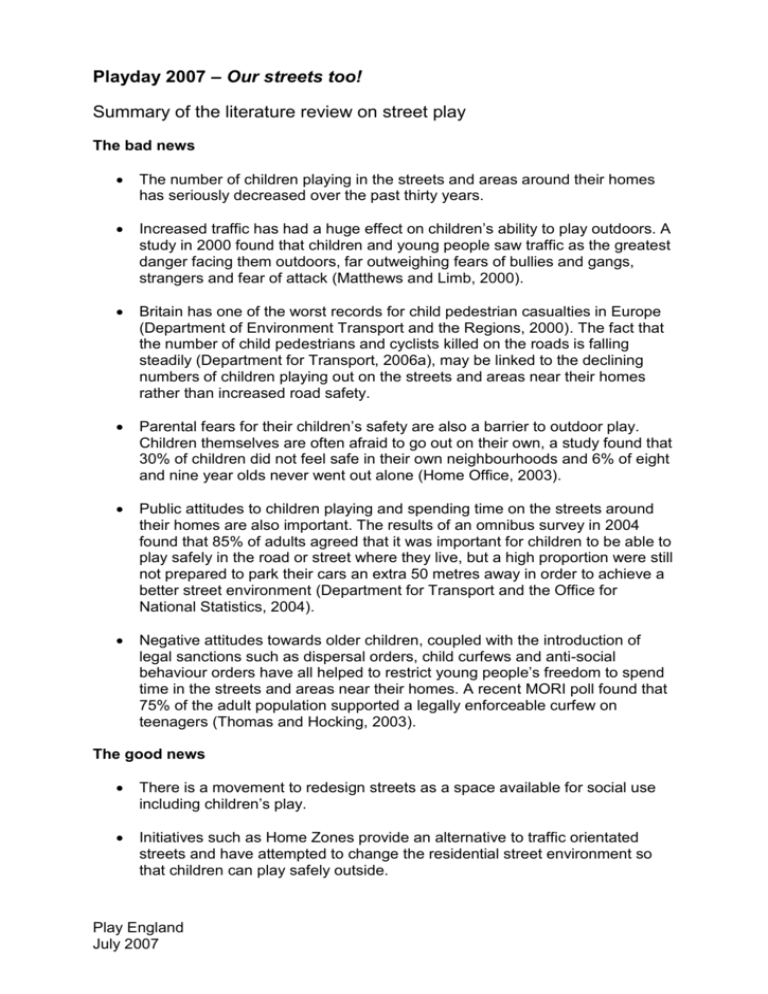
Playday 2007 – Our streets too! Summary of the literature review on street play The bad news The number of children playing in the streets and areas around their homes has seriously decreased over the past thirty years. Increased traffic has had a huge effect on children’s ability to play outdoors. A study in 2000 found that children and young people saw traffic as the greatest danger facing them outdoors, far outweighing fears of bullies and gangs, strangers and fear of attack (Matthews and Limb, 2000). Britain has one of the worst records for child pedestrian casualties in Europe (Department of Environment Transport and the Regions, 2000). The fact that the number of child pedestrians and cyclists killed on the roads is falling steadily (Department for Transport, 2006a), may be linked to the declining numbers of children playing out on the streets and areas near their homes rather than increased road safety. Parental fears for their children’s safety are also a barrier to outdoor play. Children themselves are often afraid to go out on their own, a study found that 30% of children did not feel safe in their own neighbourhoods and 6% of eight and nine year olds never went out alone (Home Office, 2003). Public attitudes to children playing and spending time on the streets around their homes are also important. The results of an omnibus survey in 2004 found that 85% of adults agreed that it was important for children to be able to play safely in the road or street where they live, but a high proportion were still not prepared to park their cars an extra 50 metres away in order to achieve a better street environment (Department for Transport and the Office for National Statistics, 2004). Negative attitudes towards older children, coupled with the introduction of legal sanctions such as dispersal orders, child curfews and anti-social behaviour orders have all helped to restrict young people’s freedom to spend time in the streets and areas near their homes. A recent MORI poll found that 75% of the adult population supported a legally enforceable curfew on teenagers (Thomas and Hocking, 2003). The good news There is a movement to redesign streets as a space available for social use including children’s play. Initiatives such as Home Zones provide an alternative to traffic orientated streets and have attempted to change the residential street environment so that children can play safely outside. Play England July 2007 ‘DIY streets’ introduced by the sustainable transport charity Sustrans are a new scheme which encourage residents to get involved in a redesign of their street and achieve some of the benefits of home zones for less money. Slow down the cars and educate the people. The Department for Transport’s child road safety strategy for 2007 includes encouraging wider use of 20mph zones in areas where children are active, and increasing road safety education. The government has also published, with Communities and Local government, a ‘Manual for Streets’. The manual recognises the need to incorporate different users of the street in design, and allow for a variety of activities including children’s play. Communities and Local Government have also had a lead role in coordinating the delivery of the ‘cleaner, safer, greener’ programme across government, which aims to increase the standard of public space and empower communities. Play England July 2007

